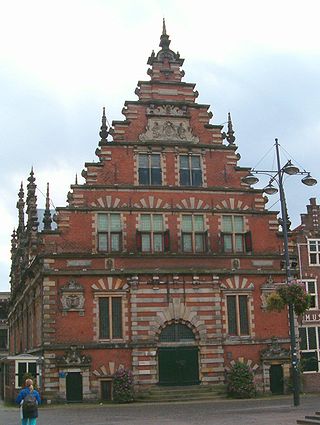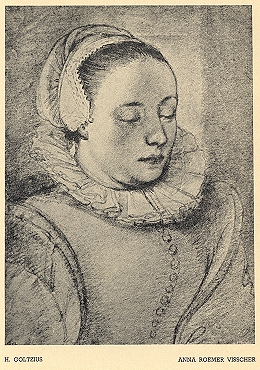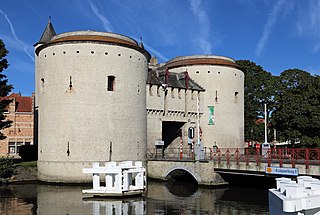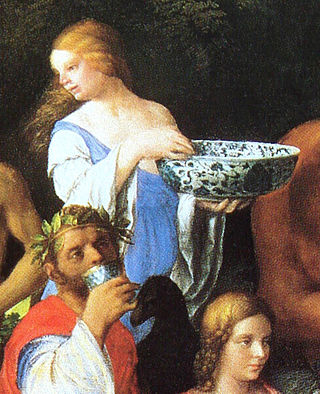Summary
The book covers an overview of the political and socio-cultural aspects of the Dutch Golden Age, Schama depicts themes of Dutch morality and the household economy. He details the Dutch's newfound wealth and conspicuous consumption, while trying to match the restraints of Calvinist philosophy and shame. Schama writes a quasi-anthropological study by utilizing the material culture such as the arts, engravings, illustrated books, delftware and bric-a-brac. He goes on to delve into the culture of smoking, family morality and their excessive penchant with cleaning. [1]
The book details on what gave rise to their sense of community, allegiance and manners. The examination of the Dutch experience as a peculiar people with a manifest destiny saved from the horrors of the flood and the war with the Spanish is much analyzed, seeing their people similar to the reincarnated children of Israel who had entered a new Canaan. To save themselves from the flood, they did this by reclaiming land with dykes and pumping windmills and from this, emerge their communalist ethics. [1]

The Batavi were an ancient Germanic tribe that lived around the modern Dutch Rhine delta in the area that the Romans called Batavia, from the second half of the first century BC to the third century AD. The name is also applied to several military units employed by the Romans that were originally raised among the Batavi. The tribal name, probably a derivation from batawjō, refers to the region's fertility, today known as the fruitbasket of the Netherlands.

The Batavian Republic was the successor state to the Republic of the Seven United Netherlands. It was proclaimed on 19 January 1795 and ended on 5 June 1806, with the accession of Louis Bonaparte to the Dutch throne. From October 1801 onward, it was known as the Batavian Commonwealth. Both names refer to the Germanic tribe of the Batavi, representing both the Dutch ancestry and their ancient quest for liberty in their nationalistic lore.

The Dutch Golden Age was a period in the history of the Netherlands which roughly lasted from 1588, when the Dutch Republic was established, to 1672, when the Rampjaar occurred. During this period, Dutch trade, scientific developments, art and overseas colonisation was among the most prominent in Europe. The first half of the period spanned from the beginning of the Eighty Years' War until its conclusion in 1648, with the second half lasting until the outbreak of the Franco-Dutch War. During the period, Dutch colonialists, many of them affiliated with the East India Company and West India Company, established trading posts and colonies in the Americas, Southern Africa and Asia, protected by the powerful Dutch States Navy. The Dutch also dominated the triangular trade and Atlantic slave trade during this period.

Sir Simon Michael Schama is an English historian and television presenter. He specialises in art history, Dutch history, Jewish history, and French history. He is a Professor of History and Art History at Columbia University.

Saskia van Uylenburgh was the wife of painter Rembrandt van Rijn. In the course of her life, she was his model for some of his paintings, drawings, and etchings. She was the daughter of Rombertus Uylenburg, the mayor as well as the justice of the Court of Friesland.

Jacob Isaackszoon van Ruisdael was a Dutch painter, draughtsman, and etcher. He is generally considered the pre-eminent landscape painter of the Dutch Golden Age, a period of great wealth and cultural achievement when Dutch painting became highly popular.

Lieven de Key was a Flemish renaissance architect who after working in his native Flanders moved to work in the Dutch Republic. He is mostly known today for his works in Haarlem. His style is described by Simon Schama as Mannerist.

Maria Tesselschade Roemers Visscher, also called Maria Tesselschade Roemersdochter Visscher or Tesselschade was a Dutch poet and glass engraver.

Amsterdam has a long and eventful history. The origins of the city lie in the 12th century, when fishermen living along the banks of the River Amstel built a bridge across the waterway near the IJ, which at the time was a large saltwater inlet. Wooden locks under the bridge served as a dam protecting the village from the rising IJ waters, which often flooded the early settlement. The mouth of the river Amstel, where the Damrak is now, formed a natural harbor, which became important for trading-exchange from the larger koggeships into the smaller ships that sailed the merchandise deeper into the hinterland.

Jan Huygen van Linschoten was a Dutch merchant, traveller and writer.

Anna Roemers Visscher was a Dutch artist, poet, and translator.
An embarrassment of riches is an idiom that means an overabundance of something, or too much of a good thing, that originated in 1738 as John Ozell's translation of a French play, L'Embarras des richesses (1726), by Léonor Jean Christine Soulas d'Allainval.
Embarrassment of riches is an idiom.

Poorter is an historical term for a type of Dutch, or Flemish, burgher who had acquired the right to live within the walls of a city with city rights.

Chinese porcelain in European painting is known from the 16th century, following the importation of Chinese porcelain wares into Europe.

Gaspar de Guzmán y Pimentel, 1st Duke of Sanlúcar, 3rd Count of Olivares,, known as the Count-Duke of Olivares, was a Spanish royal favourite of Philip IV and minister. Appointed as Grandee on 10 April 1621, a day after the ending of the Twelve Years' Truce to January 1643, he over-exerted Spain in foreign affairs and unsuccessfully attempted domestic reform. His policy of committing Spain to recapture Holland led to a renewal of the Eighty Years' War while Spain was also embroiled in the Thirty Years' War (1618–1648). In addition, his attempts to centralise power and increase wartime taxation led to revolts in Catalonia and in Portugal, which brought about his downfall.

Merry company is the term in art history for a painting, usually from the 17th century, showing a small group of people enjoying themselves, usually seated with drinks, and often music-making. These scenes are a very common type of genre painting of the Dutch Golden Age and Flemish Baroque; it is estimated that nearly two thirds of Dutch genre scenes show people drinking.
The Leo Gershoy Award is a book prize awarded by the American Historical Association for the best publication in English dealing with the history of Europe in the seventeenth and eighteenth centuries. Endowed in 1975 by the Gershoy family and first awarded two years later, the prize commemorates Leo Gershoy, professor of French history at New York University. It was awarded biennially until 1985, and annually thereafter.

The Young Bull or The Bull is an oil painting of a bull by Paulus Potter. It is in the collection of the Mauritshuis in The Hague in the Netherlands.
Bridget Pagetnée Masterson was an English Puritan who acted as her husband John Paget's literary executor and editor.
















